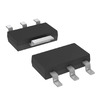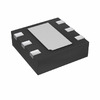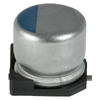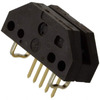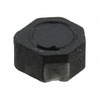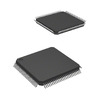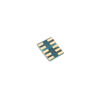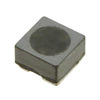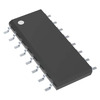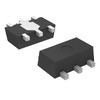AT89C51 Microcontroller: Features, Functions and Applications
Microcontrollers are important components in modern technology, influencing everything from simple home devices to advanced aerospace systems. Among them, the AT89C51 microcontroller from the 8051 family stands out for its versatility and capability. With features like 4KB of Flash memory, 128 bytes of RAM, and 32 input/output lines, the AT89C51 supports a wide range of applications, making it a popular choice in cost-effective electronics. Its adaptability reflects the ongoing drive for innovation in various fields, enabling the development of reliable and efficient systems. This article explores the attributes and capabilities of the AT89C51, as well as its alternatives and practical uses in modern technology.Catalog
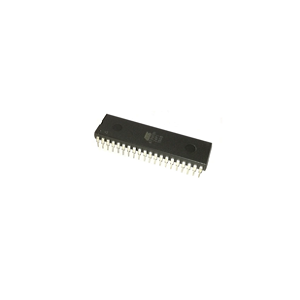
Overview of the AT89C51 Microcontroller
The AT89C51, crafted by Atmel, is a microcontroller that resonates with a complex blend of innovation and tradition. Housing 16KB of Flash memory and 512B of RAM, this 8-bit marvel is built on high-density, non-volatile technology. Embracing the MCS-51 instruction set, the microcontroller boasts a sturdy architecture with its 8-bit CPU. Embedded within is an internal voltage regulator, harmonizing a 5V power supply to deliver stable operation despite fluctuating voltage conditions. Its programming flexibility—achieved through ISP, IAP, and DebugWire—broadens its utility across diverse arenas like home automation, logistics systems, peripheral devices, and automotive electronics. The adaptability it provides resonates in ever-evolving technological landscapes, where the ability to pivot can shape outcomes.
AT89C51 Microcontroller Alternatives
• MSP430
• AT89S52
AT89C51 Microcontroller Pin Layout
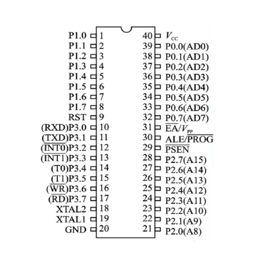
Control Lines
Control lines manage reset, clocking, and interrupt functions. The reset line rejuvenates the device, offering a fresh start for embedded projects. Clock control allows for the precision timing desired in intricate operations. Interrupt lines boost reactivity, enabling the microcontroller to deftly juggle multiple tasks by focusing on external signals.
Power Lines
The power lines, comprising VCC and GND, provide stable energy use for device functionality. A steady power supply prevents operational disruptions. In practice, frequently add capacitors to cushion against voltage shifts, protecting from unexpected resets or failures.
I/O Port Lines
I/O ports are crafted for flexible input/output tasks. Each port's configuration for input or output enhances adaptability. In industrial settings, these ports engage with sensors and actuators, enabling immediate data handling and management. Correct setup is require to maintain data flow integrity and device operations.
External Crystal Lines
External crystal lines are good for linking oscillators to deliver the steady clock signals for exact timing. In fields demanding precise timing alignment, like telecommunications or precision tools. Precision crystals are chosen to reduce timing discrepancies, which is great in high-stakes conditions. With a skillful integration of these elements, the AT89C51 microcontroller offers a dependable platform for creating advanced applications. By combining adaptability with precision, it provides a solid base for a multitude of embedded systems.
Structure of the AT89C51 Microcontroller
Programmable Interrupt System
The AT89C51 microcontroller is equipped with an adaptable interrupt system. This feature manages a variety of interrupt requests, enhancing the ability to handle multiple tasks simultaneously in embedded environments.
Timers and PWM Capabilities
The microcontroller includes two timers/counters. These components support accurate timing operations, which are beneficial for generating Pulse Width Modulation (PWM) signals in motor control and signal modulation tasks.
Core Components
At its core, the AT89C51 houses the 8051 CPU, a capable Arithmetic Logic Unit (ALU), and a set of registers. These elements collaboratively enhance computational efficiency in processing tasks. An external oscillator generating clock signals to synchronize internal operations, ensuring smooth and coordinated performance. A reset circuit is present to initialize the system, mitigating any risks of unpredictable states during startup or disturbances.
I/O Interface and Device Connectivity
The microcontroller's I/O interface includes four 8-bit ports. These ports facilitate dynamic connection with various peripheral devices, allowing integration with external components such as sensors and actuators for comprehensive system implementation. The inclusion of UART enhances serial communication, enabling data interaction with other devices—great for systems requiring networking, resembling a well-coordinated suite of interconnected devices.
Memory Architecture
The AT89C51 features a memory structure comprising 4KB of flash memory dedicated to program code storage, offering ample capacity for complex instructions and maintaining program integrity over time. It includes 128B of RAM for runtime data management. This memory design achieves a balance between non-volatile and volatile storage, refining both program execution and performance efficiency.
Features of the AT89C51 Microcontroller
Programming and Versatility
With its foundation in the MCS-51 architecture, the AT89C51 microcontroller captures attention for its straightforward programming and versatile application possibilities. Its design supports:
• ISP (In-System Programming)
• IAP (In-Application Programming)
• DebugWire methods
Memory and Application Scope
Featuring 16KB of program memory alongside 512 bytes of data memory, the AT89C51 offers ample space for various needs. It thrives in numerous applications, ranging from embedded systems to simple control tasks, where its capacity for handling firmware updates through ISP is often valued for reducing complexities.
Frequency Flexibility
Capable of supporting a variety of oscillators, the AT89C51 includes an internal frequency of 12MHz and accommodates an external oscillator up to 24MHz. This range allows the microcontroller to be finely tuned to specific power and speed demands, enhancing its adaptability and efficiency. Moreover, the option to switch between internal and external sources provides adaptability to diverse operating environments.
Operational Functions of the AT89C51 Microcontroller
Interrupt Handling
The AT89C51 can accommodate multiple interrupt sources, facilitating smooth task prioritization and management. Such interrupts are invaluable in processing scenarios, like automation systems, where tasks depend on precise timing. This adaptability broadens the microcontroller's utility in dynamic settings.
Flexibility through Reprogrammability
Reprogramming empowers the AT89C51 to evolve with new demands or functional enhancements without altering its hardware. This adaptability contributes to cost-efficiency and device longevity in ever-changing technological domains. This capability accelerates market entry.
Timer Utilization
Inbuilt timers assist in executing precise delays and producing pulse-width modulation (PWM) signals. These are advantageous for applications such as modulating motor speeds and signal processing. Gaining expertise in timer configurations allows for process optimization, such as adjusting PWM outputs tailored to different motor speeds, underscoring the microcontroller’s practical versatility.
Data Processing with ALU and Memory
The AT89C51’s Arithmetic Logic Unit (ALU) and memory enhance data processing efficiency. These elements excel in managing arithmetic operations and data tasks, for applications needing extensive mathematical or data handling capabilities. Insights from industry practice highlight that optimizing both ALU and memory use substantially boosts computational prowess, enabling the microcontroller to efficiently manage complex challenges.
Peripheral Integration
Equipped with serial interfaces, the microcontroller simplifies communication with various devices. Leveraging these interfaces streamlines integration into larger systems, like industrial data acquisition units. Strategic deployment of serial communication greatly boosts data throughput and dependability, in high-pressure situations.
SPI and GPIO offer adaptable peripheral control options, simplifying connections and interaction with a range of external components. This is valuable in modular design contexts where modules require fluid connectivity.
Timers are instrumental in managing peripherals, such as controlling external sensors or actuators. Mastery of timer management can enhance synchronization, leading to stable and responsive operations. A deep understanding of timer functions supports better integration and reliability.
AT89C51 Microcontroller Block Diagram

Analyzing Differences Between AT89C51 and AT89C52
The AT89C52 features a third timer (T2) and additional interrupt sources, boosting its performance in managing intricate tasks. This translates to more adaptable timing operations and the capacity to react to numerous simultaneous events, which appeals to the needs of advanced embedded systems. These attributes reflect the desire for efficiency and precision in technological development.
Memory Expansion and Its Impact
With Flash memory doubled to 8KB compared to the AT89C51, and an increase in RAM to 256 bytes from 128 bytes, the AT89C52 offers ample space for coding and data management. This memory expansion supports sophisticated software applications and betters performance in memory-intensive tasks. The added space facilitates efficient multitasking and effective data processing, catering to the demands of real-time applications, fueling the drive for faster and more powerful solutions.
Applications and Advantages
In application, systems using the AT89C52 achieve increased efficiency and reliability, in managing multiple inputs and outputs. The additional timer and memory enhancements in the AT89C52 frequently result in smoother project progression with reduced need for workarounds. This chip presents a strategic benefit for us aiming to craft strong robust designs with minimal restrictions to overcome challenges and push the boundaries of innovation.
Applications of the AT89C51 Microcontroller
Communication Devices
The AT89C51 microcontroller enhances communication devices, melding seamlessly with various radio frequency modules. This facilitates smooth data transmission and reception, which breathes life into communication channels. Its flexibility supports easy interfacing with LCD displays and keypads, promoting user-friendly interactions.
Smart Instruments
In the sophisticated landscape of smart instruments, the AT89C51 stands out by refining precision and accuracy. It skillfully processes inputs from multiple sensors, like monitoring environmental conditions or measuring fluid levels. Implementing advanced algorithms, it advances the predictive maintenance of these instruments. This evolution emphasizes the ongoing drive to optimize instrument performance in response to ever-changing field demands.
Automotive Electronics
The AT89C51 plays a central role in automotive electronics, from engine management to entertainment systems. It processes data from vehicle sensors, enhancing fuel efficiency and minimizing emissions. The march towards autonomous driving showcases its ability to manage complex control systems, integrating adeptly with modern vehicular technology. Its application serves as a testament to the fusion of classic engineering principles with cutting-edge technology solutions.
Smart Homes
The AT89C51 microcontroller is use for connecting and controlling diverse home automation devices. It harmonizes lighting, climate control, and security systems, boosting household efficiency. By leveraging data from IoT devices, it anticipates and adapts to user behavior, crafting a seamless living experience. Effective deployment often highlights adaptability and the need for customization to meet varied user preferences.
Embedded Systems
Serving as a core element in embedded systems, the AT89C51 ensures efficient data handling and control. Its presence is pervasive in scenarios such as industrial machines and robotics. The microcontroller's prowess in executing complex tasks while conserving power is appreciated.
Medical Devices
In medicine, the AT89C51 enhances the capabilities of diagnostic and monitoring devices. It adeptly handles crucial data from biomedical sensors, enabling precise measurements and timely diagnostics. As home healthcare devices evolve, its utility magnifies in improving patient monitoring, showcasing influence on the quality of care and precision of operations.
Frequently Asked Questions [FAQ]
1. What is AT89C51?
The AT89C51 is a notable 8-bit microcontroller from Atmel's 8051 series, capturing the essence of innovation in electronics. Equipped with 4KB of Flash memory and 128 bytes of RAM, it is capable of handling numerous erase/program cycles. Its versatile architecture makes it a fit for various uses, including consumer electronics and industrial settings, offering a canvas for creativity and technological advancement.
2. Are 8051 and AT89C51 the same?
The AT89C51 is part of the esteemed 8051 family but stands out with advanced memory and enhanced input/output features. This variant showcases the progression of the 8051 architecture, designed for broader applications while being compatible with traditional software, appealing to both nostalgic users and modern-day innovators.
3. What does the ‘C’ in AT89C51 denote?
The 'C' indicates a CMOS-based microcontroller, known for its efficient power usage and reliability under varied conditions. The CMOS technology adapts gracefully to different environments, from low-power gadgets to complex integrated systems, echoing the need for dependable and efficient solutions.
4. What is the difference between AT89S51 and AT89C51?
Programming flexibility is where they diverge: the AT89S51 supports in-system programming (ISP), facilitating updates and modifications without disassembly. This advantage caters to dynamic applications, providing a practical solution compared to the AT89C51, for those who value convenience and adaptability.
5. Why choose AT89C51?
Opting for the AT89C51 involves weighing its straightforward design and affordability. It integrates effortlessly into wireless and automated controls, suitable for both home and industrial spheres. Its approachable design invites even those with modest technical knowledge to embark on sophisticated projects, sparking innovation while respecting budget limitations.
About us
ALLELCO LIMITED
Read more
Quick inquiry
Please send an inquiry, we will respond immediately.
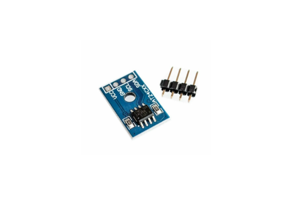
AT24C256 EEPROM: Functions, Working Principle, Applications, and 24LC256 Comparison
on September 26th
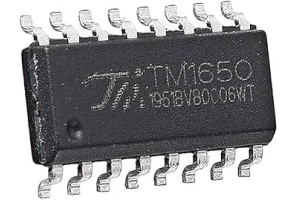
TM1650 Chip: Everything You Need to Know
on September 25th
Popular Posts
-

What is GND in the circuit?
on January 1th 3271
-

RJ-45 Connector Guide: RJ-45 Connector Color Codes, Wiring Schemes, R-J45 Applications, RJ-45 Datasheets
on January 1th 2815
-

Understanding Power Supply Voltages in Electronics VCC, VDD, VEE, VSS, and GND
on November 20th 2634
-

Fiber Connector Types: SC Vs LC And LC Vs MTP
on January 1th 2265
-

Comparison Between DB9 and RS232
on January 1th 1881
-

What Is An LR44 Battery?
Electricity, that ubiquitous force, quietly permeates every aspect of our daily lives, from trivial gadgets to life-threatening medical equipment, it plays a silent role. However, truly grasping this energy, especially how to store and efficiently output it, is no easy task. It is against this background that this article will focus on a type of coin cell battery that may seem insignificant on the...on January 1th 1846
-

Understanding the Fundamentals:Inductance Resistance, andCapacitance
In the intricate dance of electrical engineering, a trio of fundamental elements takes center stage: inductance, resistance, and capacitance. Each bears unique traits that dictate the dynamic rhythms of electronic circuits. Here, we embark on a journey to decipher the complexities of these components, to uncover their distinct roles and practical uses within the vast electrical orchestra. Inductan...on January 1th 1806
-

What Is RF and Why Do We Use It?
Radio Frequency (RF) technology is a key part of modern wireless communication, enabling data transmission over long distances without physical connections. This article delves into the basics of RF, explaining how electromagnetic radiation (EMR) makes RF communication possible. We will explore the principles of EMR, the creation and control of RF signals, and their wide-ranging uses. The article ...on January 1th 1800
-

CR2430 Battery Comprehensive Guide: Specifications, Applications and Comparison to CR2032 Batteries
What is CR2430 battery ?Benefits of CR2430 BatteriesNormCR2430 Battery ApplicationsCR2430 EquivalentCR2430 VS CR2032Battery CR2430 SizeWhat to look for when buying the CR2430 and equivalentsData Sheet PDFFrequently Asked Questions Batteries are the heart of small electronic devices. Among the many types available, coin cells play a crucial role, commonly found in calculators, remote controls, and ...on January 1th 1797
-

Comprehensive guide to hFE in transistors
Transistors are crucial components in modern electronic devices, enabling signal amplification and control. This article delves into the knowledge surrounding hFE, including how to select a transistor's hFE value, how to find hFE, and the gain of different types of transistors. Through our exploration of hFE, we gain a deeper understanding of how transistors work and their role in electronic circu...on November 20th 1782



